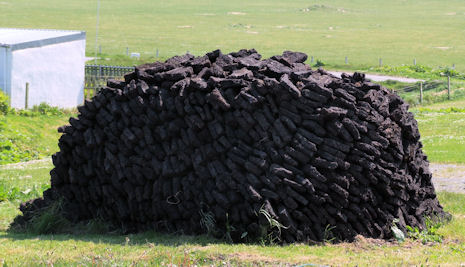(This article was originally published at conservationtoday.org)
We can all take action to help combat global warming. Here is something for the gardeners amongst you to think about.
Direct man-made CO2 emissions are problematic enough, but they are only part of a complex interplay of sources and sinks for greenhouse gases that is still beyond our full understanding. For example, there has for some time now been concern over frozen peat bogs thawing and releasing stored up methane, locked away for millenia, and far worse than CO2 as a greenhouse gas.
But peat is our friend too; and you can help by leaving it where it is.
Why? Because peat is largely made up of dead plants, rich in captured carbon that has been prevented, due to the moist air-free bog environment, from fully decomposing back to CO2. Drain the bogs, distrurb or harvest the peat, and the carbon recombines with oxygen in the air, taking us back to square one.
The National Trust are at the forefront of public consciousness raising about peat in the UK, illustrating the issue with numbers that are far from intuitive. For example, the Trust estimates there are 100kg of carbon locked in every cubic metre of peat; which in CO2 terms is like driving a car for 2000 miles. In their report, Natures’s Capital, we learn peatlands are the UK’s single largest carbon reserve, amounting to around 3 billion tonnes, or equivalent to 20 years’ worth of man-made CO2 emissions. Across the globe, although peat covers only 3 per cent of the global land surface, the amount of carbon stored within it is enormous – equivalent to twice that of all the world’s forests combined.
As well as dead plants, peat contains so-called ‘Black Carbon’; that is carbon captured following moorland burning. In the UK, The British Geological Survey are researching how this and other soil carbons behave, and their likely impact on climate change. Only last month, a fascinating paper in Nature Geoscience highlighted how inaccurate knowledge about the ratio of soil black carbon to organic carbon in Australia – with implications on the global scale – can result in significant (almost 25%) over-estimation of CO2 release from global warming feedback mechanisms. On a planet-wide scale, the possible swings are massive.
So – back to what we can do. First, don’t forget its not just about climate change. Peat bogs in the UK are also an important habitat for wildlife and a source of colourful diversity for us humans. I’ve passed many a happy hike literally bouncing along on Peak District peat.
You might like to get involved in one of the remediation efforts run by the National Trust. And if you’re a domestic gardener – as a group consuming seventy percent of horticultural peat in the UK, and all from drained bogs that are killed in the process of its extraction – you can make a direct impact by simply not using it. And, as the UK accounts for 8% of the world’s northern peatlands, collectively holding 30% of all soil-based carbon, you have the potential to make a real global impact in your own back garden – as it were. The golden rules are:
- Don’t buy peat
- Only buy pot plants bedded in non-peaty compost
- Quiz your garden centre on its compost/peat policy; share this article!
- Support local wildlife trusts who are working to regenerate degraded mossed areas
- Encourage your family and friends to do likewise
- And write to your MP
Lastly, if you want to get more involved on the policy and campaigning side, get in touch with The Peatlands Campaign Consortium, who have been a major influence on the government in setting targets for reduced peat use.
